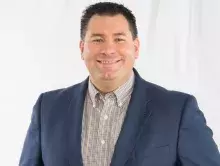Probably the smartest copywriting rule I’ve ever heard is “begin with the end in mind.” As a writer, marketer, magician, father, husband and golfer, these six words are the secret to getting the important things done.
In the event planning world, it all comes down to “what do you want your guests to do/say/think/feel after the event?”
And if you’re hosting events for your clients and customers, what you want them to “do” is probably the most important. Ultimately, you want them to do something that will advance the sale.
That might look like this:
- Answering a phone call from a sales person
- Opening an email from a sales person and replying
- Reading a white paper or info-product, which triggers an automated email or phone call
- Visiting a trade show booth the next day to see a new product
Imagine having a simple, repeatable system for making sure more of your clients actually took those actions after the event. This is real strategic event planning, and it’s absolutely within the capability of any event planner at any event.
You can encourage a lot more of your clients to continue the conversation through some simple — but critical — components that your business event must have to succeed. We’ll dive into each step as we continue this series of blog posts, but here is an overview of the process:
First, the event must be memorable. During a conference or trade show, your clients will attend dozens of events and sessions, and your event must stand out in their mind. The event must be appropriately branded, too, so they not only remember your event but also that your company presented the event for them.
Second, your client must remember meeting their assigned sales representative. As humans, we are much more likely to respond to people we already know. If the client recognizes the sales representative’s name, they’re much more likely to accept the follow up call or email.
Third, your sales representative must build some rapport with the client. Again, as humans, we’re more likely to respond to people we know, like, and trust. Your event should help the sales representative move his relationship with the client past “salesman/customer” and closer to a “business friend” or — ideally — “trusted advisor” position. Rather than simply recognizing their name, the client feels like they “know” the sales representative. At an event, you can even connect the client to your company’s executives (a very real “we listen to you” message) or product development engineers (imagine your clients knowing “the people who design and build our equipment listen to you”).
Fourth, there should be an offer and call to action at the event. Generally, this should not be a request for a sale, but rather an offer to give something to the client or do something for the client if they agree to a follow up step. It should be something very easy to agree to because the client will get a lot of value (information, personalized service, bonuses, etc.) for very little action. Ultimately, people don’t take action without a strong reason, and the offer is the reason that they will answer your phone calls, open your emails, agree to a follow up appointment, or visit your trade show booth.
Don’t be put off by the idea of making an offer and securing a quick commitment. We are hosting this event for a purpose, and the call to action is a critical component of the event strategy.
Fifth, all this should lead to a “next action” after the event. If you’re starting a new business relationship or opening a new opportunity in an existing relationship, the salesperson should tell the client that he will send something in the mail, email or make a phone call to follow up after the event. At a convention, the client should agree to meet with the salesperson at the trade show booth the next day.
There’s no need for heavy-handed pressure to obtain commitments written in stone - simply ending a conversation by saying “I’ll give you a call on Tuesday at 11am” or “I’ll see you at the booth tomorrow” is enough to commit the client to a plan. If you want to send a calendar request to confirm the time and date, fine. Exchanging business cards or contact information helps solidify the agreement. What’s important is the client can anticipate the phone call or expect to see the salesperson at the show the next day.
These five components are a series of progressive steps, and the event should take the client through each step in order. At first we’re just having fun and enjoying the event, then we spend some time having fun and enjoying the event with our sales representative, maybe meet with an executive or product developer, and finally we agree to follow up with these people after the event.
Republished with author's permission. This blog was originally published here.
Don't miss any event-related news: sign up for our weekly e-Newsletter HERE and engage with us on Twitter, Facebook and LinkedIn!


